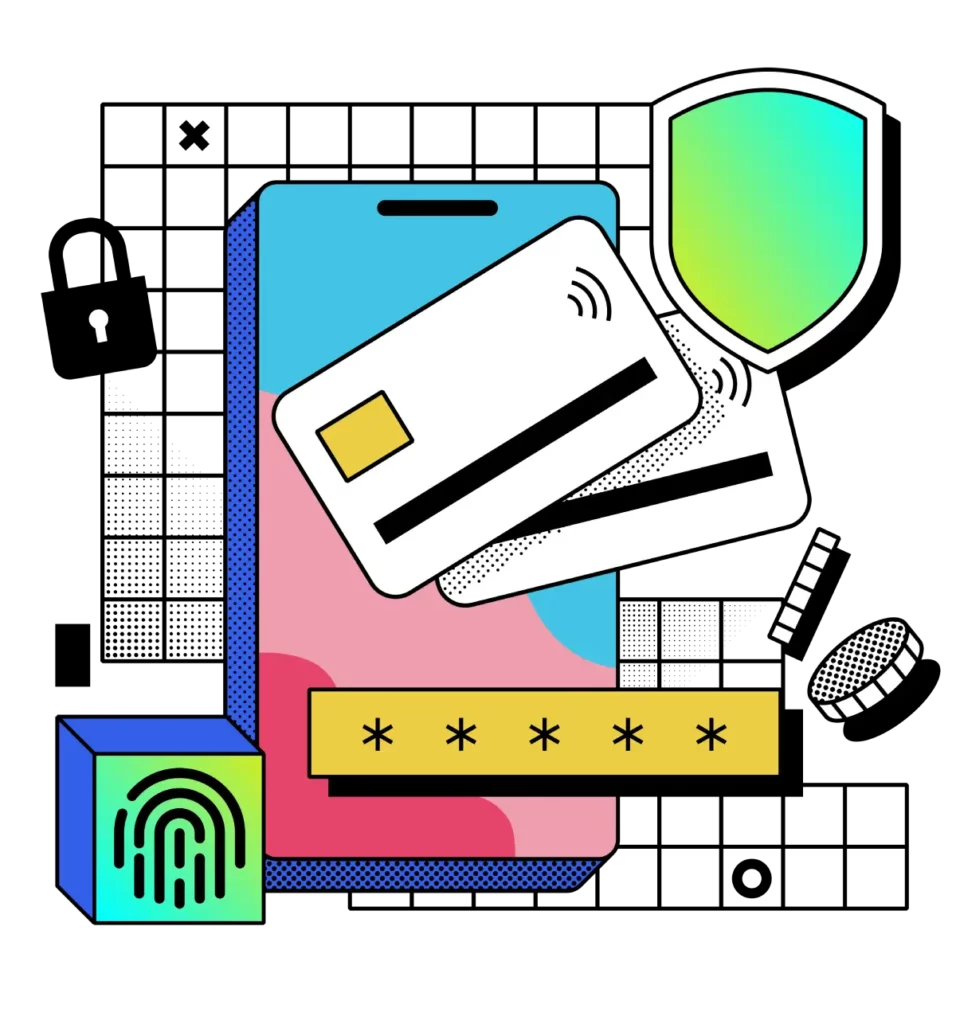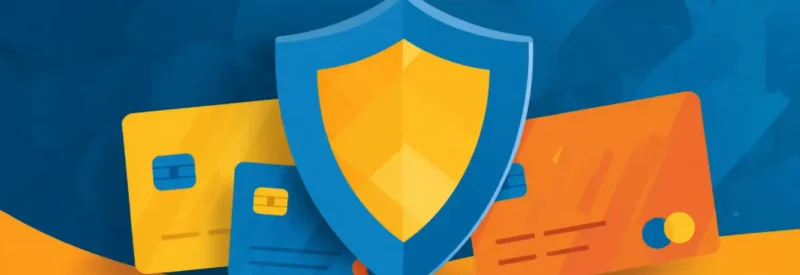You’re running a thriving business when suddenly, your payment processor shuts down your account due to a security breach. Your revenue dries up overnight, customer confidence takes a hit, and you’re left scrambling for a payment solution. Secure payment systems are your shield against this nightmare scenario. Knowing what makes them secure could be the difference between growth and a major setback, especially if you’re operating in a high-risk industry.
This guide breaks down what makes a payment system secure, highlights the most secure payment methods available, and helps you determine which option is the best fit to protect your business. Let’s dive in!
Key Takeaways
- A secure payment system typically layers encryption, tokenization, fraud detection, and PCI compliance to protect financial data.
- High-risk businesses require tailored security solutions beyond basic compliance, focusing on advanced fraud detection and chargeback prevention.
- To choose the right secure payment system, you must understanding of your specific risks, integration needs, and the payment provider’s experience supporting your industry.
Why Secure Payment Systems Matter More Than Ever

A secure payment system is a comprehensive framework of technologies and policies designed to protect sensitive customer data during every transaction. It prevents unauthorized parties from obtaining credit card numbers and banking information.
Cybercriminals continue to launch sophisticated attacks targeting payment systems. In 2023, payment fraud resulted in nearly $34 billion in losses globally.[1]Fintech Futures. “Payment Card Fraud Losses Approach $34 Billion“. Accessed July 14, 2025. For high-risk businesses, these threats are magnified due to higher transaction volumes, increased regulatory scrutiny, and industry-specific vulnerabilities.
For high-risk merchants, a security incident can be catastrophic, potentially leading to account termination. And finding alternative processing solutions can be difficult. For businesses processing high-risk transactions, robust security measures help to prevent chargebacks, save substantial amounts in fraud-related costs, and maintain processing relationships.
What Makes a Payment System Secure? Key Features to Look For
A secure payment system isn’t just about checking a compliance box or installing one piece of software. Truly secure payment systems rely on a mix of protections — some visible, some working behind the scenes — to guard sensitive data, block fraud, and keep transactions running smoothly.
From industry standards like PCI compliance to behind-the-scenes tools like encryption and tokenization, each component plays a specific role in keeping your business and your customers safe. Here’s a breakdown of the most important features to look for when evaluating a secure payment system.

PCI DSS Compliance
PCI compliance is a good starting point to ensure you’re utilizing secure payment methods. The Payment Card Industry Data Security Standard (PCI DSS) sets security standards for storing, processing, and transmitting cardholder data. However, compliance alone doesn’t guarantee security. Many businesses that suffered data breaches were PCI-compliant at the time of the incident. Strong systems go further, adding enhanced access controls, intrusion detection, and other protocols (discussed below) to lock down sensitive data.

Payment Gateways
Modern payment gateways serve as intelligent security checkpoints that analyze every transaction in real-time, making them a cornerstone of any secure payment system. Beyond simply routing payments, these systems are equipped with advanced algorithms and machine learning models that continuously monitor for suspicious activity — flagging unusual behavior such as mismatched IP locations, velocity anomalies, or irregular spending patterns that human oversight would likely miss.

Encryption
Encryption scrambles sensitive customer information into unreadable data, rendering it unreadable to anyone without the proper decryption key. When credit card information is entered at the point of sale, encryption immediately converts that data into a complex code to ensure it stays secure during payment processing transmission, making it a crucial layer in any secure payment system.

Tokenization
Credit card tokenization replaces sensitive payment data — like a card number — with a unique, randomly generated token. This token has no meaningful value outside your payment system and can’t be used by hackers, even if intercepted. Tokenization is especially effective for recurring payments, mobile wallets, and other environments where stored data security should be prioritized.

Multi-Factor Authentication (MFA)
Multi-factor authentication (MFA) strengthens payment processing security by requiring users to verify their identity through two or more methods, such as passwords combined with one-time codes or biometric checks. One common example is 3D Secure protection, which adds an extra verification step during checkout — a text message code or biometric confirmation — to ensure the person making the purchase is the legitimate cardholder.
Secure online payment systems often implement MFA at multiple points: customer login, transaction approval, and administrative access. Advanced systems can trigger additional authentication steps based on unusual transaction patterns.

Fraud Detection
Advanced fraud detection systems use machine learning to analyze hundreds of data points for each transaction, including device fingerprinting, geolocation data, and purchase history. These systems flag potentially fraudulent transactions within milliseconds while allowing legitimate purchases to process smoothly.
Remember, the ultimate goal for any secure payment system is to catch real threats without creating friction for genuine customers. Security that’s too aggressive can backfire, turning away legitimate customers and hurting your conversion rates.
Popular Secure Payment Methods Used Today
Different payment methods offer varying levels of security, and understanding these differences helps you make informed decisions about which options to offer your customers while enabling safe online shopping experiences. Below, we explore some of the most secure payment methods available today.

EMV Chip Cards and Contactless Payments
EMV transactions offer significant security advancements over traditional magnetic stripe transactions. These chips generate unique transaction codes for each purchase. If a hacker copies that code, they can’t reuse it because it’s only valid for that specific transaction.
Contactless payments go one step further, utilizing dynamic authentication alongside tokenization. These security measures ensure that your actual card data is not transmitted during the transaction. Instead, a one-time-use token or cryptogram is used to complete the payment.

Mobile Wallets and Tokenized Transactions
Mobile wallets offer some of the highest levels of cardholder protection available today. These systems combine biometric authentication, device-specific encryption, and tokenization to ensure your actual card numbers never leave your device.
As explained above, when customers use mobile wallets for contactless transactions, the payment system generates a unique token and dynamic cryptogram for each transaction. Even if criminals intercept this data, the token is useless without the original device and cryptographic keys, making it virtually impossible to use for unauthorized purchases.

Cryptocurrency and Blockchain Payments
Cryptocurrency payments bring some interesting security benefits because they’re built on blockchain technology — basically, a ledger that can’t be altered once a transaction is recorded. This makes it difficult for anyone to tamper with the records.
That said, the safety of crypto payments depends significantly on the system’s setup. Securely managing private keys and following the right regulations are just as important as the technology.
More people are starting to use cryptocurrency, especially tech-savvy buyers and international companies looking to save on fees and speed up cross-border payments. But even with this growth, crypto still makes up a small piece of the overall payment pie.

ACH Transfers with NACHA Compliance
ACH transfers are a dependable and affordable way to handle payments, especially for subscriptions or recurring invoices. When set up with the proper protections, they can be just as safe as using a credit card.
Keeping ACH payments secure means having strong safeguards in place, such as multi-factor authentication, thorough account checks, and following NACHA’s rules to the letter.
How to Choose a Secure Payment System That Fits Your Business Model
Selecting the right secure payment system requires careful evaluation of your business needs, risk profile, and growth objectives. Here are the key factors to consider to ensure your payment security fits your business needs and keeps your transactions safe:

- Evaluate Your Risk Profile and Industry Needs: The industry in which you operate affects your business’s security needs and available payment options. High-risk businesses require specialized solutions due to higher chargeback vulnerability and regulatory scrutiny. Additionally, consider transaction volume, average ticket size, and geographic reach to ensure your provider can securely support your needs.
- Look for Proven Integrations and Vendor Reputation: Choose a payment partner that offers seamless integration with your existing systems and a solid track record with businesses similar to yours. If you use high-risk virtual terminals, make sure your payment partner provides robust APIs, comprehensive development support, thorough security testing, and continuous monitoring to maintain strong protection.
- Prioritize Support, Uptime, and Chargeback Management: Choose a payment partner with high uptime, redundant systems, and 24/7 support from security experts. For high-risk businesses, prioritize those offering robust chargeback management, real-time monitoring, and automated dispute resolution.
Secure Your Revenue: Next Steps for High-Risk Merchants
Payment security isn’t just about preventing fraud if you’re in a high-risk industry. It’s about keeping your business alive. One security slip can lead to an account shutdown, and it’s difficult to find another payment provider as a high-risk business. Many providers don’t fully understand the unique challenges you face, which is why generic solutions often fall short.
That’s where PaymentCloud comes in. We specialize in protecting high-risk businesses with tailored fraud detection and chargeback prevention tools designed specifically for your industry. Our goal is to help you safeguard your revenue and maintain strong processing relationships so you can focus on growing your business with confidence.
Don’t settle for one-size-fits-all security. Partner with experts who understand your challenges and are ready to protect what you’ve built.
Secure Payment Systems FAQs
How do I know if my current payment processor is PCI compliant?
The easiest way to determine if your payment processor is PCI compliant is to ask them for their Attestation of Compliance (AOC) or a copy of their PCI certificate. This document proves they’ve gone through the necessary steps to meet PCI Data Security Standards, and it should be up-to-date.
If they can’t provide this or if you want to double-check, you can also look them up on the official PCI Security Standards Council website.
Remember, just having PCI compliance doesn’t mean your payment system is entirely risk-free, but it is a good starting point to ensure your provider takes security seriously.
What should I do if I suspect a security breach in my payment system?
If something feels off, reach out to your payment provider immediately. They’re the best first line of defense and can help figure out what’s going on. Write down everything you notice — when it started, what looks strange, and which parts of your system might be involved. However, don’t try to dig into it yourself; you could make things more complicated to fix.
If the breach is severe, you might also need to inform your customers and follow any reporting rules.
Are mobile payments like Apple Pay secure enough for online stores?
Yes, mobile payments like Apple Pay are considered very secure. They use several layers of protection to keep customer data safe.
Instead of sending your actual card number during a transaction, Apple Pay uses something called tokenization. A unique, one-time code generates for each purchase. Even if someone intercepted the transaction, they wouldn’t get any useful information. Also, mobile payments often require biometric authentication, like Face ID or Touch ID.






